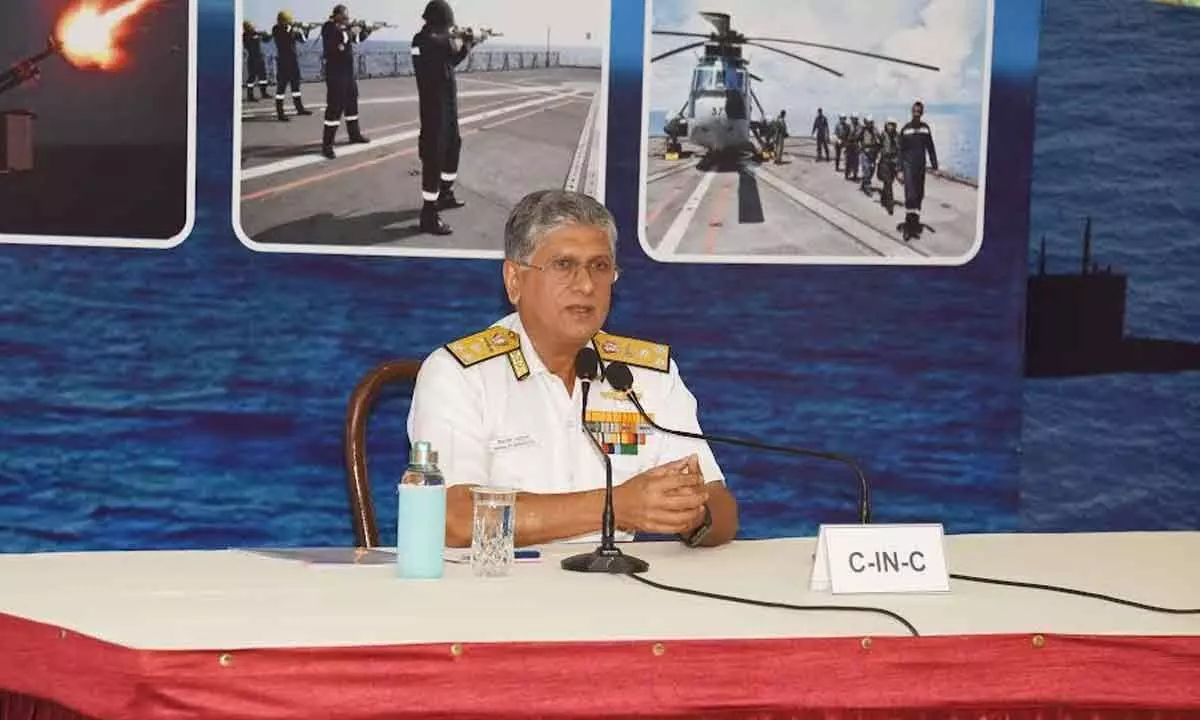
Visakhapatnam: From a little more than a coastal navy in the early 80s, Indian Navy’s operational footprint has grown to a worldwide footprint. Today, all significant navies across the world are very keen on exercising and partnering with the Indian Navy. Apparently, the future of the navy is very bright, opined Vice Admiral Biswajit Dasgupta, Flag Officer Commanding in Chief, Eastern Naval Command.
Sharing transformational changes witnessed during his glorious tenure of 41 years and seven months in the Indian Navy, the Vice Admiral, who is slated for retirement this month-end, says, “Earlier, we used to sail out of our base ports, go out 1,500 miles into the sea, carry out some operational exercises and come back to the harbour. Today, we have almost a worldwide footprint all across the Indian Ocean Region (IOR) and beyond to the east, the Arabian Sea in Western Naval Command and the Western Pacific. More importantly, sustaining at sea with a large operational footprint is indeed a challenging task.”
From the not-so-outward-looking Indian Navy back then, the Vice Admiral shares, the Indian Navy’s international stature has grown manifold. “There were not many navies interested in doing work with us as we were also equally hesitant. As time went by, we have transformed ourselves into a very credible and professional force with contemporary technologies and better training. However, today, all navies are keen on partnering with us,” the Vice Admiral conveys.
Apparently, the Indian Navy is carrying out bilateral and multilateral exercises with a large number of nations and every international grouping would like to associate with India. Indicative of an improved international stature, close to 60 countries have been invited for the ensuing MILAN-2024. Last time, 39 countries took part in the navy’s largest exercise, shares the Vice Admiral.
With state-of-the-art store depots and dockyards, adoption of modern methods and cutting-edge technology, Vice Admiral Biswajit Dasgupta says, the navy’s professionalism took giant strides. There are a very few aspects in which the Indian Navy is not up to the best, ENC chief informs.
Sharing the journey of indigenisation of ships, the ENC chief recalls, it started in 1960s with the first major warship frigate INS Nilgiri by Mazagon Docks Limited. “Only five countries in the world have got the guts and technology to build an aircraft carrier and India is one among them. In September 2022, the country built indigenous aircraft carrier INS Vikrant. Much of the equipment that went into INS Vikrant is of indigenous origin,” he elaborates, adding that similar steps would be taken for indigenisation of aircraft and its components, submarine and its components to cut down on the dependence of foreign partners as years pass by.
In the next couple of decades, the Indian Navy will become fully indigenous, highly professional, strong and credible and continue to work for peace and stability in the Indian Ocean Region and beyond, anticipates the ENC chief.
















